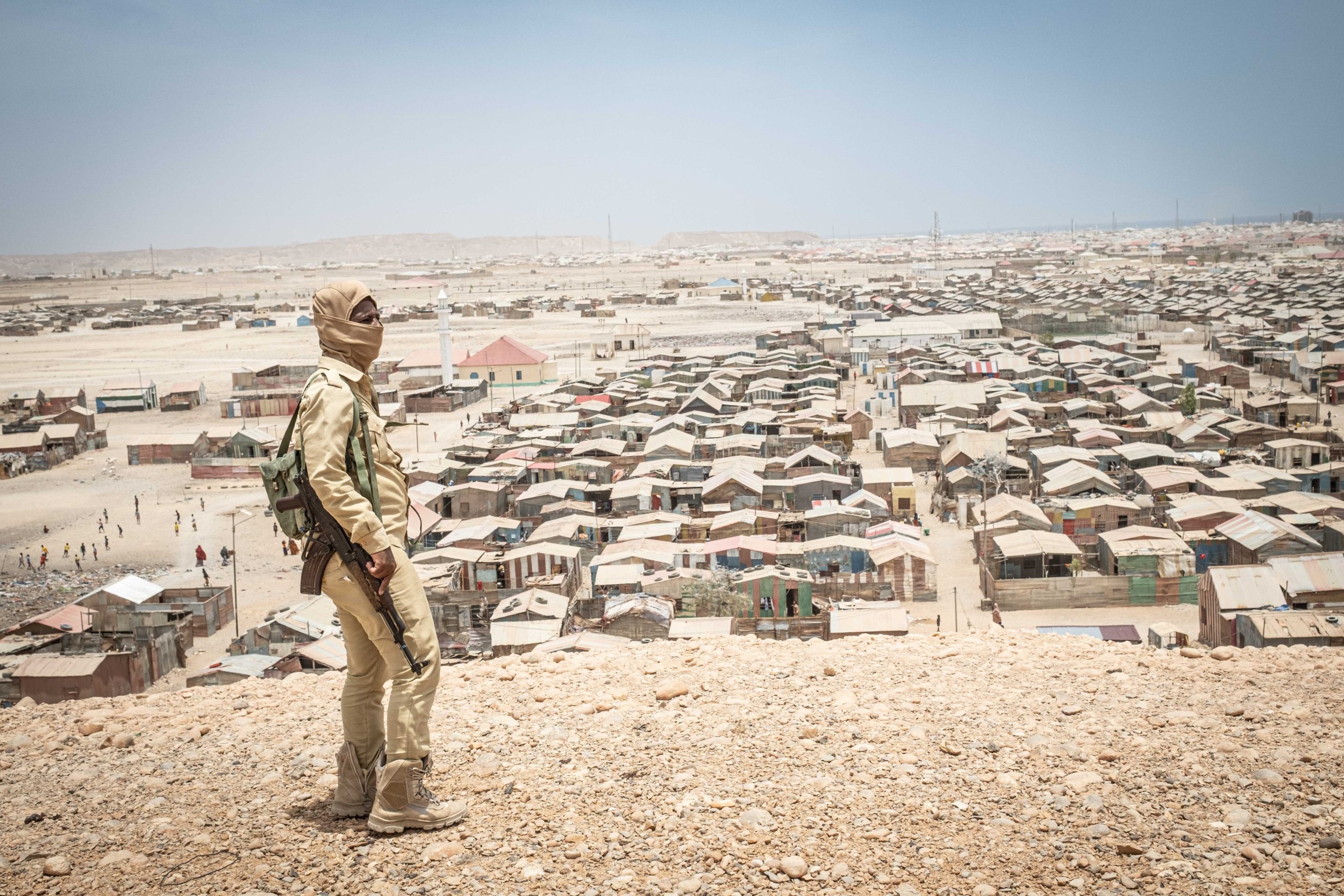Somalia 2025 – Le Monde, InkStick, Nigrizia
Somalia’s hidden migration corridor and the ISIS threat
On the long beach of Merero, in northern Somalia’s Puntland region, the sand is strewn with what remains of human passage — shoes hardened by salt, torn shirts, a broken flashlight. They are all that remains of the Ethiopian migrants who tried to cross the Gulf of Aden aboard overloaded boats bound for Yemen. A few kilometres inland, in the dusty outskirts of Bosaso, a small cemetery holds dozens of graves marked in Amharic. Most who depart from this coast will never be found again.
A police officer from the Puntland Maritime Police Force stares at the horizon.
“We don’t know how many boats leave, or how many ever reach Yemen,” he says.
“We have no radar, no rescue boats, no way to count the dead.”
Along more than 1,600 kilometres of coastline, the authorities are left to face this crisis alone.
This is the Somali branch of the Eastern Migration Route, the least known and most dangerous corridor linking the Horn of Africa to the Arabian Peninsula. Unlike the Djibouti route, it remains largely invisible to humanitarian agencies and the media. According to the International Organization for Migration (IOM), nearly 60,000 people left Somalia for Yemen in 2024 — more than double the figure from 2022 — but the real numbers are believed to be much higher, as most departures from Puntland go unrecorded.
Migrants choose this path because it is cheaper and easier to remain unnoticed. Many are young Ethiopians from Oromia or Amhara, fleeing poverty, political persecution, or forced military conscription. They reach Bosaso after weeks of walking through desert and conflict zones, hoping to earn enough to pay the dalala, the smugglers who control every stage of the journey.
“I’m afraid of the sea,” says Hamse Abdiraman, a 21-year-old from Arsi who fled conscription in Ethiopia and reached Bosaso after two months on foot. “But I’ll try one day. There’s nothing left for me back home.”
Once the epicentre of Somali piracy, Bosaso has become a crossroads of migration and trafficking. Around its port, informal settlements have grown into fragile communities of displaced Somalis and stranded Ethiopians who work in markets, construction sites, or nearby farms to survive. In one of these neighbourhoods, a Somali woman known as Mama Oromo shelters newly arrived migrants in a tin-roofed house. “They come with nothing — no money, no strength. Some are sick, some go mad. I do what I can,” she says. “Most stay a few months, then disappear toward the sea.”
But Bosaso has also become a new frontier for the Islamic State in Somalia (ISS). From its bases in the nearby Cal-Miskaad mountains, the group formed by at least 1000 fighters exploits migrant flows as both a source of recruits and of funding. Colonel Aden Muse, head of Bosaso’s Criminal Investigation Police, explains that the extremists operate through the same networks as the smugglers, hiding among them to recruit or extort vulnerable Ethiopians. “They promise work, food or protection, then take them to the mountains for training,” he says. The authorities believe that these infiltrations have turned the migration corridor into an unexpected security front.
Over the past year, the threat has grown beyond Somalia’s borders. The Islamic State in Somalia (ISS) is now suspected of using the migration route not only to recruit and tax migrants but also to expand its influence into Ethiopia. In July 2025, Ethiopian intelligence dismantled a network linked to the group and arrested more than eighty alleged operatives trained in Puntland. Analysts say that radicalization may begin long before the journey itself, with recruiters spreading across Oromia, Amhara and Somali regions, using the promise of migration as bait. From the arid slopes of the Cal-Miskaad to the streets of Bosaso, the line between trafficking and jihad has blurred — the same routes that once carried migrants and contraband now channel money, weapons and ideology.
This reportage is part of a broader body of work retracing the Eastern Migration Route from Ethiopia to Somalia — from the farmlands of Arsi in Oromia to Dire Dawa, Harar, Somaliland, and finally the ports of Puntland. Ethiopia lies at the heart of this exodus, with around 250,000 departures each year, and the recent arrests of ISIS affiliates across the country show that the Eastern Route is no longer just a humanitarian corridor, but a conduit of regional insecurity.
At the edge of the desert and the sea, this little-known branch of the Eastern Route reveals an unseen frontier where displacement, vulnerability, and extremism converge — a place where migration becomes both escape and entrapment, and where the waves erase more stories than we can ever count.




































